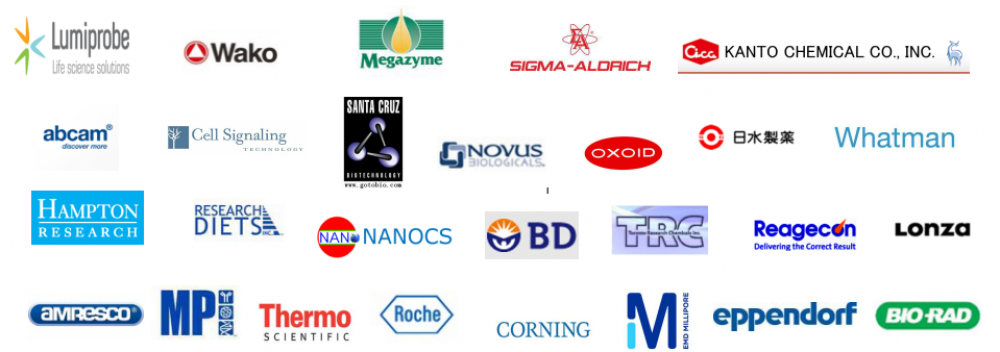Vector Labs代理,歡迎訪問Vector Labs官網或者咨詢我們獲取相關Vector Labs產品信息以及報價。
Vector Labs 公司是世界著名的生物學檢測試劑公司,七十年代其在全球首推的生物素-親和素系統引領了生物學檢測方法的重大革命,該系統被普遍視為目前最靈敏、最可靠與最有效的染色系統,并被廣泛應用于免疫組織化學、免疫電鏡、原位雜交與凝集素化學中。該系統仍在不斷地發展,以滿足廣大研究人員的各種不同要求。Vector 公司還是世界上凝集素產品的主要供應商,并提供大量的新產品,如酶底物、神經元示蹤劑及蛋白質、糖類與核酸的標記、分離與檢測試劑。
Concanavalin A (Con A), Agarose bound
Description
Agarose bound Con A is prepared using our affinity-purified lectins.?Con A recognizes α-linked mannose present as part of a core oligosaccharide in many serum and membrane glycoproteins. At neutral and alkaline pH, Con A exists as a tetramer of four identical subunits; below pH 5.6, Con A dissociates into active dimers of 52 kDa. Acetylation, succinylation, or other derivatizations can also produce stable forms with dimeric structures. (See succinylated Con A). Nicks in the sequence are often present in the purest preparations due to hydrolytic damage within the seeds.
Features:
- Bead diameter ranges in size from 45-165 microns
- Matrix is stable in solutions at pH 3-11 as well as many organic solvents
- Immobilized lectins are prepared using affinity purified lectins
- Covalent attachment preserves lectin activity and minimizes conformational changes that might result in nonspecific or hydrophobic interactions
- Hydrophilic spacer arm is inserted between the lectin and the matrix
- Conjugated proteins are not leached off the beads by Tris or other routinely used buffers
- No residual charges present after conjugation. ?This minimizes non-specific binding to the matrix
- Product supplied as a 1:1 suspension in buffer
?
Specifications
| Unit Size | 10 ml, 100 ml |
|---|---|
| Applications | Glycobiology, Affinity Chromatography |
| Recommended Storage | 2-8 °C DO NOT FREEZE |
| Solution | 10 mM HEPES, pH 7.5, 0.15 M NaCl, 0.1 mM CaCl2, 0.01 mM MnCl2, 20 mM glucose, 0.08% sodium azide |
| Recommended Usage | Wash gel thoroughly with buffer before use to remove sugar added to stabilize the lectin. Recommended product for eluting glycoconjugates bound to this agarose-lectin: Glycoprotein Eluting Solution, Cat. No. ES-1100. Alternatively, a 0.2 M α-methyl mannoside/0.2 M α-methyl glucoside mixture can be used. After use, wash the gel with several column volumes of buffered saline, then resuspend gel in buffered saline containing 0.08% sodium azide for storage. |
| Matrix Conjugate | Lectins |
| Sugar Specificity | Mannose, Glucose |
| Conjugate | Agarose |
Documents
- Safety Data Sheet
- Lectins in Histochemistry, ELISA, and Western Blot Applications
- Download CoA
- Datasheet
Product FAQs
I purchased an agarose bound lectin from Vector Labs. Do you have a protocol outline on how this may be applied in a column format?
What are recommended conditions for using the agarose-lectin in chromatography?
Related Products

Glycoprotein Eluting Solution for Mannose/Glucose Binding Lectins Catalog #: ES-1100-100

Concanavalin A (Con A), Fluorescein Catalog #: FL-1001-25

Concanavalin A (Con A), Unconjugated Catalog #: L-1000-500

Concanavalin A (Con A), Rhodamine Catalog #: RL-1002-25

α-methylmannoside Catalog #: S-9005

α-methylglucoside Catalog #: S-9006

Concanavalin A (Con A), Biotinylated Catalog #: B-1005-5
Citations
Technical Information
Con A requires calcium or manganese ions at each of its four saccharide binding sites. Although these divalent metal ions are bound tightly to the polypeptide structure, buffers which can bind calcium (such as phosphate) generally should be avoided in diluting Con A, since a gradual loss in activity may occur.
Agarose bound* Con A is prepared using our affinity-purified lectins. Heat stable, cross-linked 4% agarose beads with a molecular weight exclusion limit of about 2x107 daltons are used as the solid-phase matrix to which the lectins are covalently coupled.?
This coupling method provides several advantages over the traditional cyanogen bromide procedure:
- Maximum carbohydrate binding activity of the coupled lectins is retained
- Linkage is stable over a range of pH values
Our agarose bound lectins are supplied at a constant concentration of lectin per ml of settled beads. The concentration for each lectin is selected to achieve the highest glycoconjugate binding capacity per mg of lectin present in the beads. Each lot is tested for its binding capacity using glycoproteins known to bind the lectin. This provides a guideline for the user and assures the quality of our agarose bound lectins.
Inhibiting/Eluting Sugar: mixture of 200 mM α-methylmannoside/200 mM α-methylglucoside?or Glycoprotein Eluting Solution (ES-1100)
*6 mg lectin/ml gel

